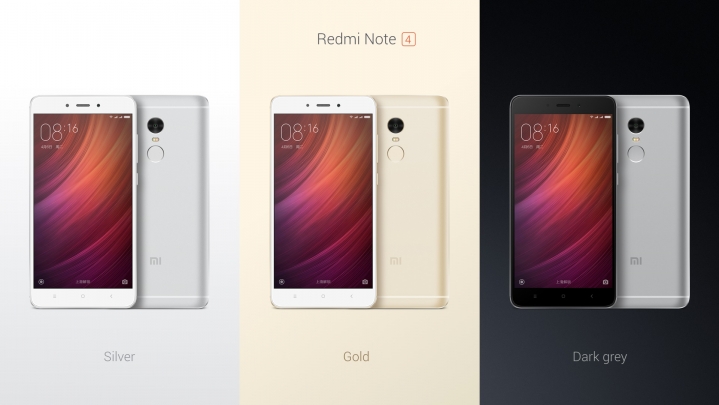
Release date and availability
Xiaomi’s Redmi Note 4 is priced at 899 yuan for the 16GB and 2GB RAM variant, which translates to about $135 U.S., or 8,900 rupees. The 64GB variant with 3GB of RAM costs 1200 yuan/$180/11,900 rupees. It originally went on sale in China at Mi.com on August 26, and is now also on sale in India in a number of different variants. If you live in India, you’ll be able to get the 32GB version for 10,000 rupees (about $155), the 32GB version for 11,000 rupees ($170), and the 64GB version for 13,000 rupees ($201).
In May, the Xiaomi Redmi Note 4 was made available in Mexico starting at 5,500 pesos ($288). The company also debuted an online platform for Mi users known as Mi Community LATAM, which can be accessed by way of a mobile app. The handset can be purchased at retailers like Coppel, Best Buy, and Sam’s Club by the end of May. Online, customers in Mexico can head over to Amazon, Best Buy, Soriana, Elektra, and Walmart.
Design
Take the iPhone 6S Plus and mix it with the HTC 10 and the result will come close to the metal Redmi Note 4. The front looks sleek and minimal, and at the bottom you’ll find capacitive navigational buttons. The power button and volume rocker rest on the right side of the device, but overall the front gives off iPhone vibes. The back, on the other hand, is more akin to HTC’s most recent flagship, the HTC 10. Antenna bands sit at the top and bottom of the device, and there’s a circular camera, flash, and a circular fingerprint sensor at the top center.

The Note 4 comes in silver, gold, and dark gray color options. Of course, the familiar Mi logo sits at the bottom back of the device.
The fingerprint sensor supports Xiaomi’s relatively new Mi Pay mobile wallet service, which competes with the likes of Apple Pay.
Specs
The 5.5-inch phablet has a resolution of 1920 x 1080 pixels, and the LCD display utilizes 2.5D curved glass so the edges blend into the sides of the device. It’s powered by MediaTek’s 10-core Helio X20 processor, and comes with 2GB or 3GB of RAM, which corresponds with 16GB or 64GB variants. The device also supports a MicroSD card, so you can add 128GB.
What’s most impressive is the battery on the Note 4 — Xiaomi has managed to pack in a 4,100mAh battery, which is much larger than the 3,500mAh battery on Samsung’s Galaxy Note 7.
The rear camera is packed with 13 megapixels, with an aperture of f/2.0. The selfie camera has 5 megapixels, which is the same as Samsung’s Note 7 and most flagship devices. It’s the sensor and processing software that will put the camera to the test, and Xiaomi has provided a few shots reportedly taken with the Note 4. Check them out:
The Redmi Note 4 runs the latest MIUI 8 software, which is based off Google’s Android operating system. The new version saw a global rollout to current devices.
The company says the “total sales of Redmi and Redmi Note series reached 50 million units.”
Originally published in August 2016. Updated on 05-10-2017 by Lulu Chang: Added news of Mexico availability.




